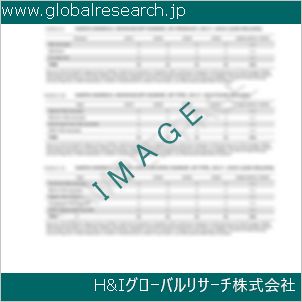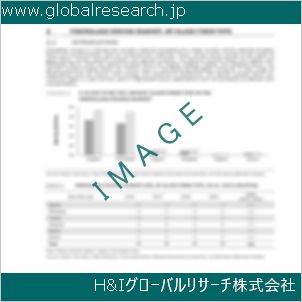Table of Contents
1 Industry Overview of Ethylacrylate
1.1 Definition and Specifications of Ethylacrylate
1.1.1 Definition of Ethylacrylate
1.1.2 Specifications of Ethylacrylate
1.2 Classification of Ethylacrylate
1.3 Applications of Ethylacrylate
1.3.1 Nuclear Application
1.3.2 Non-Nuclear Application
1.4 Industry Chain Structure of Ethylacrylate
1.5 Industry Overview and Major Regions Status of Ethylacrylate
1.5.1 Industry Overview of Ethylacrylate
1.5.2 Global Major Regions Status of Ethylacrylate
1.6 Industry Policy Analysis of Ethylacrylate
1.7 Industry News Analysis of Ethylacrylate
2 Manufacturing Cost Structure Analysis of Ethylacrylate
2.1 Raw Material Suppliers and Price Analysis of Ethylacrylate
2.2 Equipment Suppliers and Price Analysis of Ethylacrylate
2.3 Labor Cost Analysis of Ethylacrylate
2.4 Other Costs Analysis of Ethylacrylate
2.5 Manufacturing Cost Structure Analysis of Ethylacrylate
2.6 Manufacturing Process Analysis of Ethylacrylate
3 Technical Data and Manufacturing Plants Analysis of Ethylacrylate
3.1 Capacity and Commercial Production Date of Global Ethylacrylate Major Manufacturers in 2023
3.2 Manufacturing Plants Distribution of Global Ethylacrylate Major Manufacturers in 2023
3.3 R&D Status and Technology Source of Global Ethylacrylate Major Manufacturers in 2023
3.4 Raw Materials Sources Analysis of Global Ethylacrylate Major Manufacturers in 2023
4 Capacity, Production and Revenue Analysis of Ethylacrylate by Regions, Types and Manufacturers
4.1 Global Capacity, Production and Revenue of Ethylacrylate by Regions 2019-2024
4.2 Global and Major Regions Capacity, Production, Revenue and Growth Rate of Ethylacrylate 2019-2024
4.3 Global Capacity, Production and Revenue of Ethylacrylate by Types 2019-2024
4.4 Global Capacity, Production and Revenue of Ethylacrylate by Manufacturers 2019-2024
5 Price, Cost, Gross and Gross Margin Analysis of Ethylacrylate by Regions, Types and Manufacturers
5.1 Price, Cost, Gross and Gross Margin Analysis of Ethylacrylate by Regions 2019-2024
5.2 Price, Cost, Gross and Gross Margin Analysis of Ethylacrylate by Types 2019-2024
5.3 Price, Cost, Gross and Gross Margin Analysis of Ethylacrylate by Manufacturers 2019-2024
6 Consumption Volume, Consumption Value and Sale Price Analysis of Ethylacrylate by Regions, Types and Applications
6.1 Global Consumption Volume and Consumption Value of Ethylacrylate by Regions 2019-2024
6.2 Global and Major Regions Consumption Volume, Consumption Value and Growth Rate of Ethylacrylate 2019-2024
6.3 Global Consumption Volume and Consumption Value of Ethylacrylate by Types 2019-2024
6.4 Global Consumption Volume and Consumption Value of Ethylacrylate by Applications 2019-2024
6.5 Sale Price of Ethylacrylate by Regions 2019-2024
6.6 Sale Price of Ethylacrylate by Types 2019-2024
6.7 Sale Price of Ethylacrylate by Applications 2019-2024
6.8 Market Share Analysis of Ethylacrylate by Different Sale Price Levels
7 Supply, Import, Export and Consumption Analysis of Ethylacrylate
7.1 Supply, Consumption and Gap of Ethylacrylate 2019-2024
7.2 Global Capacity, Production, Price, Cost, Revenue, Supply, Import, Export and Consumption of Ethylacrylate 2019-2024
7.3 USA Capacity, Production, Price, Cost, Revenue, Supply, Import, Export and Consumption of Ethylacrylate 2019-2024
7.4 EU Capacity, Production, Price, Cost, Revenue, Supply, Import, Export and Consumption of Ethylacrylate 2019-2024
7.5 China Capacity, Production, Price, Cost, Revenue, Supply, Import, Export and Consumption of Ethylacrylate 2019-2024
7.6 Japan Capacity, Production, Price, Cost, Revenue, Supply, Import, Export and Consumption of Ethylacrylate 2019-2024
8 Major Manufacturers Analysis of Ethylacrylate
8.1 Manufacturer One
8.1.1 Company Profile
8.1.2 Product Picture and Specifications
8.1.2.1 Type I
8.1.2.2 Type II
8.1.2.3 Type III
8.1.3 Capacity, Production, Price, Cost, Gross and Revenue
8.1.4 Contact Information
8.2 Manufacturer Two
8.2.1 Company Profile
8.2.2 Product Picture and Specifications
8.2.2.1 Type I
8.2.2.2 Type II
8.2.2.3 Type III
8.2.3 Capacity, Production, Price, Cost, Gross and Revenue
8.2.4 Contact Information
8.3 Manufacturer Three
8.3.1 Company Profile
8.3.2 Product Picture and Specifications
8.3.2.1 Type I
8.3.2.2 Type II
8.3.2.3 Type III
8.3.3 Capacity, Production, Price, Cost, Gross and Revenue
8.3.4 Contact Information
8.4 Manufacturer Four
8.4.1 Company Profile
8.4.2 Product Picture and Specifications
8.4.2.1 Type I
8.4.2.2 Type II
8.4.2.3 Type III
8.4.3 Capacity, Production, Price, Cost, Gross and Revenue
8.4.4 Contact Information
8.5 Manufacturer Five
8.5.1 Company Profile
8.5.2 Product Picture and Specifications
8.5.2.1 Type I
8.5.2.2 Type II
8.5.2.3 Type III
8.5.3 Capacity, Production, Price, Cost, Gross and Revenue
8.5.4 Contact Information
…
9 Marketing Trader or Distributor Analysis of Ethylacrylate
9.1 Marketing Channels Status of Ethylacrylate
9.2 Traders or Distributors with Contact Information of Ethylacrylate by Regions
9.3 Ex-work Price, Channel Price and End Buyer Price Analysis of Ethylacrylate
9.4 Regional Import, Export and Trade Analysis of Ethylacrylate
10 Industry Chain Analysis of Ethylacrylate
10.1 Upstream Major Raw Materials Suppliers Analysis of Ethylacrylate
10.1.1 Major Raw Materials Suppliers with Contact Information Analysis of Ethylacrylate
10.1.2 Major Raw Materials Suppliers with Supply Volume Analysis of Ethylacrylate by Regions
10.2 Upstream Major Equipment Suppliers Analysis of Ethylacrylate
10.2.1 Major Equipment Suppliers with Contact Information Analysis of Ethylacrylate
10.2.2 Major Equipment Suppliers with Product Pictures Analysis of Ethylacrylate by Regions
10.3 Downstream Major Consumers Analysis of Ethylacrylate
10.3.1 Major Consumers with Contact Information Analysis of Ethylacrylate
10.3.2 Major Consumers with Consumption Volume Analysis of Ethylacrylate by Regions
10.4 Supply Chain Relationship Analysis of Ethylacrylate
11 Development Trend of Analysis of Ethylacrylate
11.1 Capacity, Production and Revenue Forecast of Ethylacrylate by Regions and Types
11.1.1 Global Capacity, Production and Revenue of Ethylacrylate by Regions 2024-2029
11.1.2 Global and Major Regions Capacity, Production, Revenue and Growth Rate of Ethylacrylate 2024-2029
11.1.3 Global Capacity, Production and Revenue of Ethylacrylate by Types 2024-2029
11.2 Consumption Volume and Consumption Value Forecast of Ethylacrylate by Regions, Types and Applications
11.2.1 Global Consumption Volume and Consumption Value of Ethylacrylate by Regions 2024-2029
11.2.2 Global and Major Regions Consumption Volume, Consumption Value and Growth Rate of Ethylacrylate 2024-2029
11.2.3 Global Consumption Volume and Consumption Value of Ethylacrylate by Types 2024-2029
11.2.4 Global Consumption Volume and Consumption Value of Ethylacrylate by Applications 2024-2029
11.3 Supply, Import, Export and Consumption Forecast of Ethylacrylate
11.3.1 Supply, Consumption and Gap of Ethylacrylate 2024-2029
11.3.2 Global Capacity, Production, Price, Cost, Revenue, Supply, Import, Export and Consumption of Ethylacrylate 2024-2029
11.3.3 USA Capacity, Production, Price, Cost, Revenue, Supply, Import, Export and Consumption of Ethylacrylate 2024-2029
11.3.4 EU Capacity, Production, Price, Cost, Revenue, Supply, Import, Export and Consumption of Ethylacrylate 2024-2029
11.3.5 China Capacity, Production, Price, Cost, Revenue, Supply, Import, Export and Consumption of Ethylacrylate 2024-2029
11.3.6 Japan Capacity, Production, Price, Cost, Revenue, Supply, Import, Export and Consumption of Ethylacrylate 2024-2029
12 New Project Investment Feasibility Analysis of Ethylacrylate
12.1 New Project SWOT Analysis of Ethylacrylate
12.2 New Project Investment Feasibility Analysis of Ethylacrylate
13 Conclusion of the Global Ethylacrylate (CAS 140-88-5) Industry 2024 Market Research Report
| ※参考情報 アクリル酸エチル(Ethylacrylate)は、有機化合物であり、化学式C5H8O2を持つエステルの一種です。この物質は、主にアクリル酸とエタノールの脱水縮合によって合成され、透明で無色の液体として存在します。アクリル酸エチルは、特異な香りを放つことから、工業的な用途が多岐にわたる物質です。 アクリル酸エチルの特徴としては、まずその優れた可溶性が挙げられます。水に対しては懸濁性ですが、多くの有機溶媒には溶けやすく、これが工業用途における大きな利点となっています。また、非常に反応性が高く、ポリマーや他の化合物との共重合反応を通じて、様々な物理的特性を持つ材料を製造することが可能です。 アクリル酸エチルには大きく分けて二つの種類があります。一つは、純粋なアクリル酸エチルそのものであり、もう一つはそれを基にしたポリマーや共重合体です。特に、ポリマーは熱可塑性樹脂や接着剤として広く利用され、その柔軟性や耐久性が評価されています。アクリル酸エチルを含むポリマーは、主に耐温度性や耐薬品性に優れ、厳しい条件下でもその性能を維持します。 用途としては、アクリル酸エチルは主に以下のような分野で利用されています。第一に、塗料やコーティング剤の製造があります。これにより、耐久性の高い仕上げや防腐処理などが可能となります。第二に、接着剤の製造にも使用されます。強力な接着性能を持つため、工業用や家電製品、建材などさまざまな場面でその効果を発揮します。第三に、繊維産業でも利用されており、繊維の強化や防水処理、染色用のバインダーとして使われることが多いです。 さらに、アクリル酸エチルは、ポリマー製造の原料としてだけではなく、医療分野や化粧品分野でも利用されています。具体的には、医療用の防水バンデージや粘着テープにおいて、肌への優しさと耐久性が求められるため、アクリル酸エチルの特性が重視されます。また、化粧品業界においては、エモリエント剤や安定剤として利用されており、製品の性能向上に寄与しています。 関連技術としては、アクリル酸エチルの用途に応じた重合技術が挙げられます。例えば、フリーラジカル重合やアニオン重合などの手法を使用して、希望の特性を持つポリマーを合成することが可能です。また、ナノテクノロジーを駆使して、ミクロのサイズで改良された機能性材料を創出するための研究も進んでおり、これによりさらなる応用範囲の拡大が期待されています。これらの技術は、アクリル酸エチルのポリマーの性能を飛躍的に向上させる役割を果たしています。 アクリル酸エチルの製造、利用、関連技術においては、環境への配慮も重要な課題となっています。例えば、廃液や煙の処理、使用後のリサイクル方法などが議論されており、持続可能な製品を目指す動きが加速しています。今後は、より環境配慮型のプロセスが求められると予想され、アクリル酸エチルを利用した製品の市場は変化していくことでしょう。 このように、アクリル酸エチルは非常に多様な用途を持ち、様々な技術の応用によって、さらにその利活用が進むことが見込まれます。この物質の特性を生かした新しい製品や技術が開発されることで、今後の市場においても重要な役割を果たすことになるでしょう。 |
❖ 免責事項 ❖
http://www.globalresearch.jp/disclaimer












